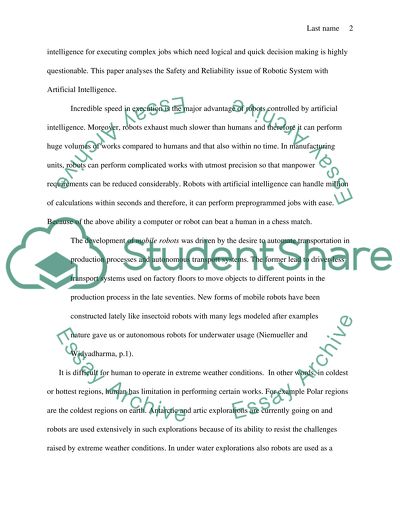Cite this document
(“The Safety and Reliability Issue of Robotic System with Artificial Research Paper - 2”, n.d.)
The Safety and Reliability Issue of Robotic System with Artificial Research Paper - 2. Retrieved from https://studentshare.org/information-technology/1585371-the-safety-and-reliability-issue-of-robotic-system-with-artificial-intelligence
The Safety and Reliability Issue of Robotic System with Artificial Research Paper - 2. Retrieved from https://studentshare.org/information-technology/1585371-the-safety-and-reliability-issue-of-robotic-system-with-artificial-intelligence
(The Safety and Reliability Issue of Robotic System With Artificial Research Paper - 2)
The Safety and Reliability Issue of Robotic System With Artificial Research Paper - 2. https://studentshare.org/information-technology/1585371-the-safety-and-reliability-issue-of-robotic-system-with-artificial-intelligence.
The Safety and Reliability Issue of Robotic System With Artificial Research Paper - 2. https://studentshare.org/information-technology/1585371-the-safety-and-reliability-issue-of-robotic-system-with-artificial-intelligence.
“The Safety and Reliability Issue of Robotic System With Artificial Research Paper - 2”, n.d. https://studentshare.org/information-technology/1585371-the-safety-and-reliability-issue-of-robotic-system-with-artificial-intelligence.


